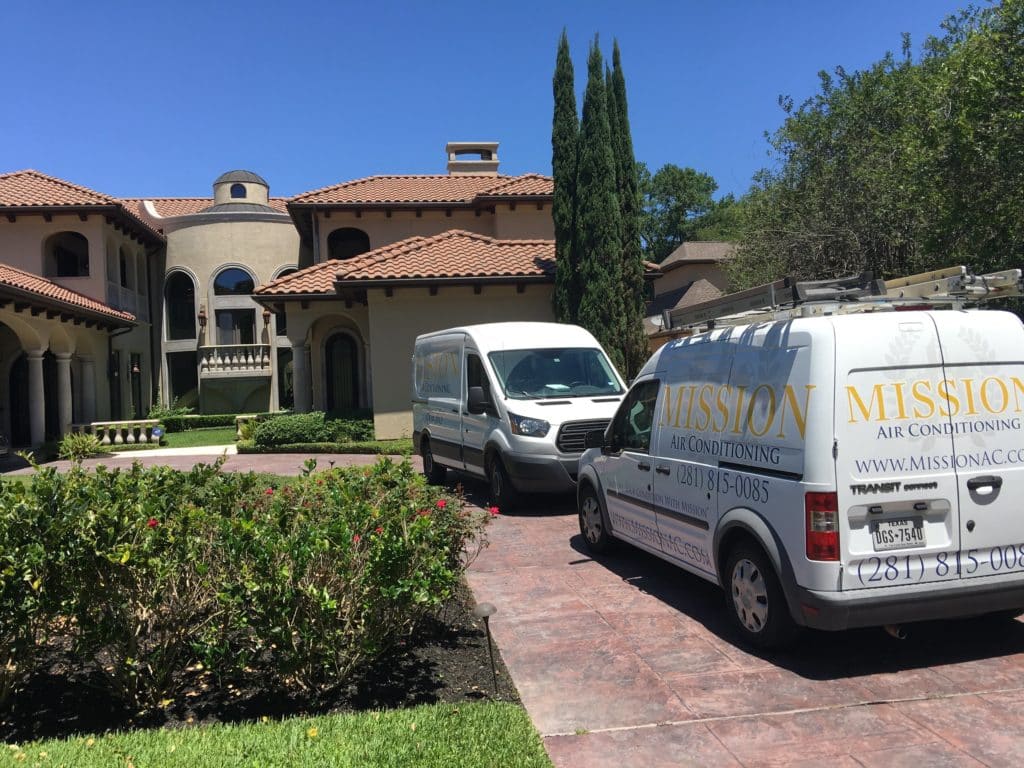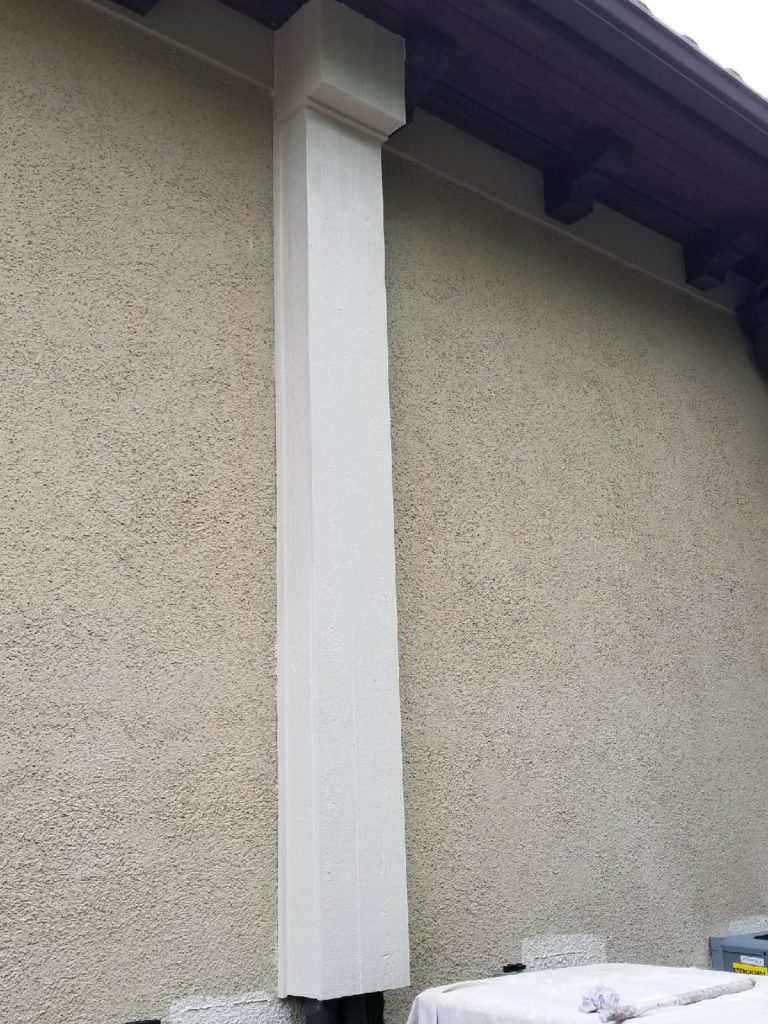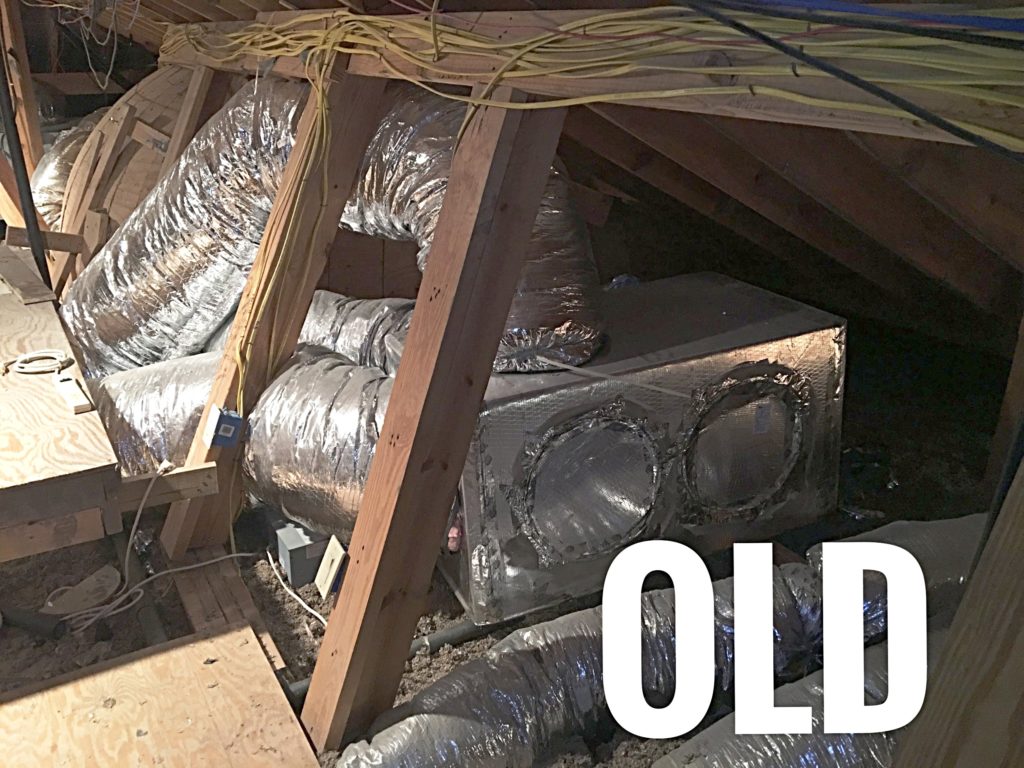REVIEW 20 SEER DAIKIN HEAT PUMP SYSTEM INSTALLATION
Here is an overview of a fairly significant HVAC system installation in Houston, TX where we replaced an underperforming system with three high efficiency Daikin 20 SEER heat pump central air conditioning and heating systems. My purpose in showing this project is to give you a general sense of the design and installation process for our HVAC systems.
When we install and design a system we are ultimately focused on providing systems which maximize equipment longevity, reliability, and comfort to the home. In order to deliver on those we must consider proper system size, airflow, filtration, material selection etc. Not only do we want the system to perform but we also want the system to look clean. Through the following pictures and information I will try to touch on each of those facets of the installation.
TECH SPECS
-
DZ20VC (three 5 ton systems)
-
Variable Speed Inverter
-
CTK04 WiFi Thermostats w/ remote indoor and outdoor sensors
-
custom plenums
-
custom return
-
custom cedar outdoor line set covers
-
12 year parts warranty
-
12 year labor warranty
-
20 SEER
-
10 HSPF
-
Outdoor dBA sound rating cooling low speed 56.1 dBA intermediate 61.1 dBA maximum 73.9 dBA
-
1 1/8 Copper suction lines
-
Honeywell handheld remote thermostat
-
Media filtration
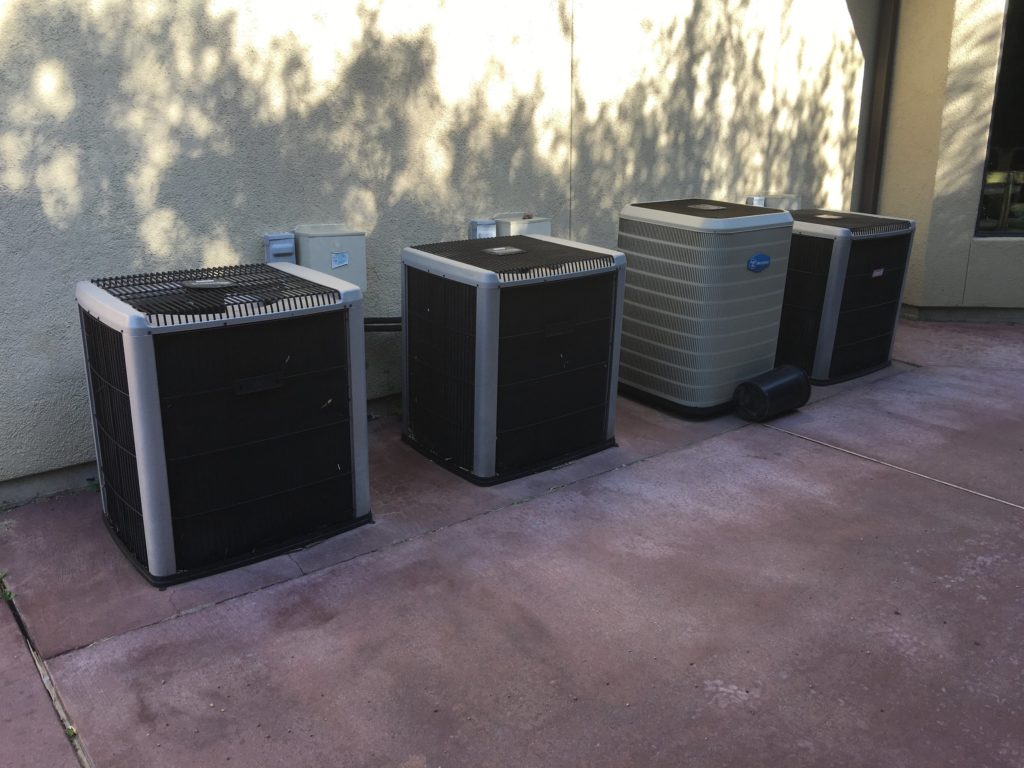
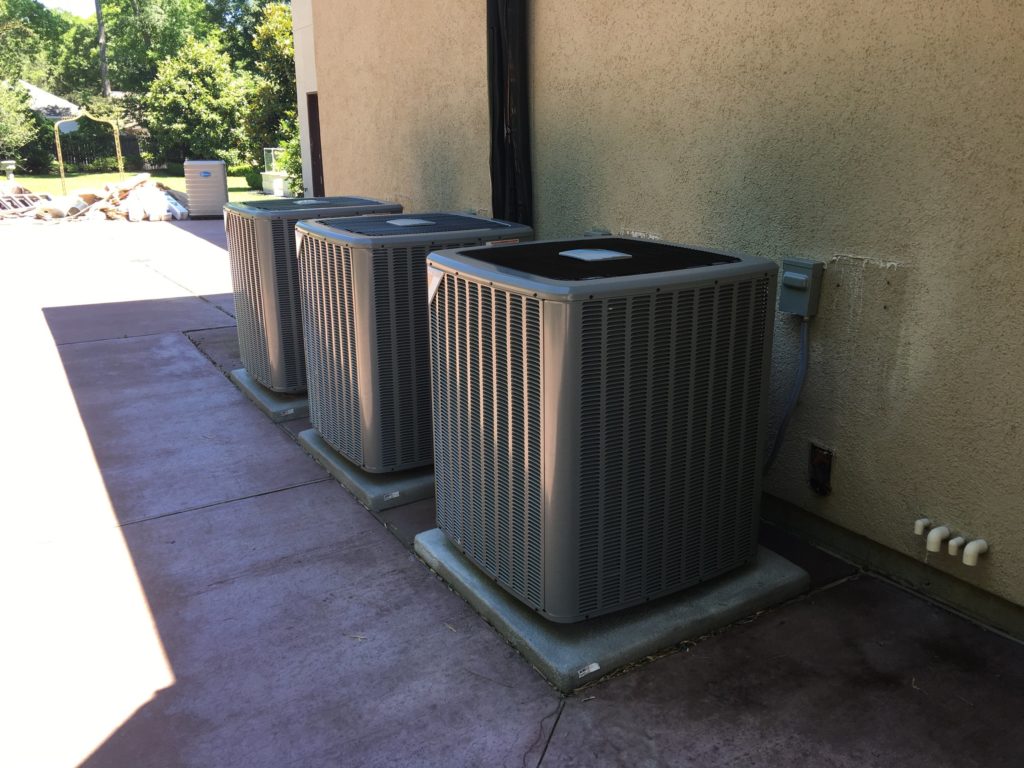
Load Calculation/System Design – The previous hvac system design, as you can see from the pictures, was not typical. There were 4 outdoor units (condensers). The condensers were paired together to two indoor air handlers with individual blowers to specific rooms creating a large number of singular zones. Great in concept but not good in implementation. These were newish operational systems which had consistent issues. My belief is that the cooling system was not able to ultimately handle the total number of zones. Meaning, with too many zones contributed to the complexity and likelihood of breakdown. In any case the previous system had to go.
The first step toward a proper final product was to perform a heat load calculation. We performed a full ACCA Manual J. From the results we opted to transition the systems to three 5 ton heat pumps. The Manual J process on a home like this takes a significant amount of time when properly done. Data required includes all building materials, insulation levels, window types/sizes etc etc. Measurements and data are then input into Wrightsoft for further analysis. From the sensible and latent load calculations we determined that DZ20VC combinations would adequately satisfy the home’s needs.
In order to allow the new equipment to run more effectively and effectively long term we sized the ducts according no National Comfort Institute standards as well we added oversized media filtration allowing for proper airflow AND keeping the system more clean.
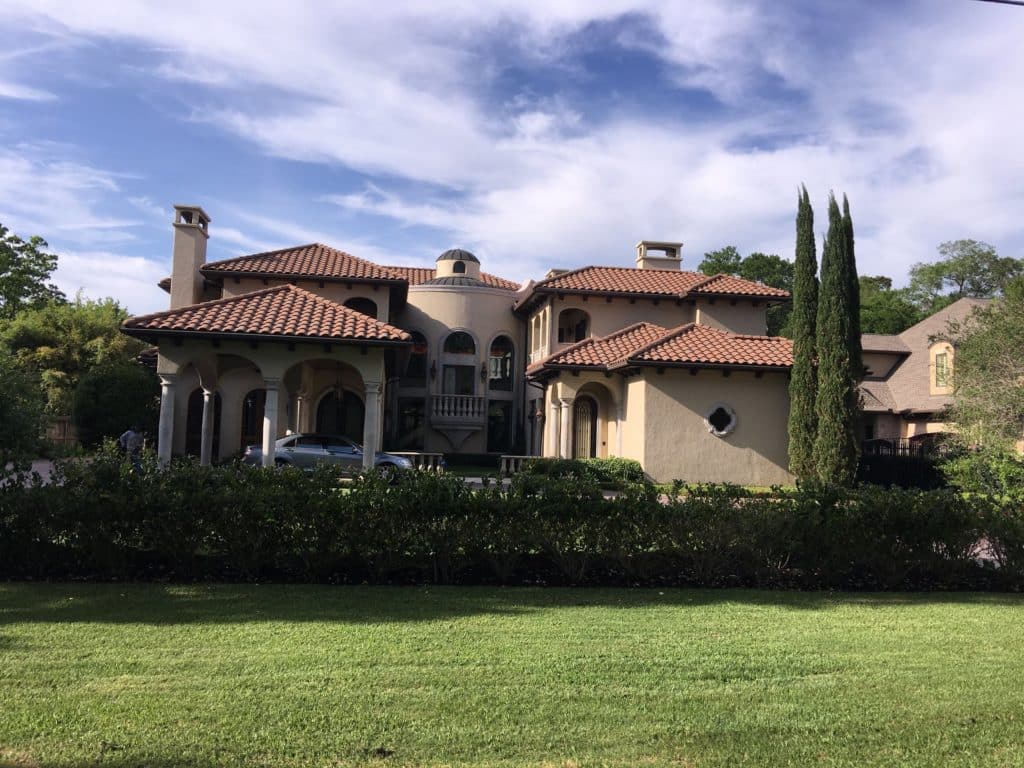
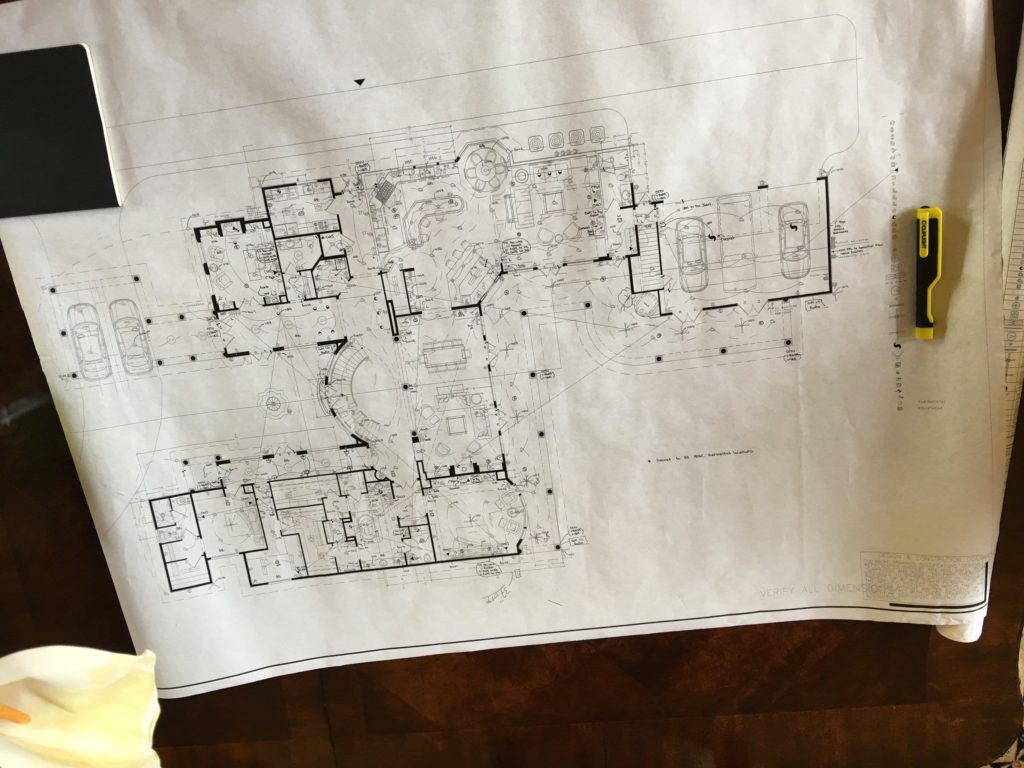
– INSTALLATION SPECIFICATIONS – Converting from the old system we found the previous unit had 3/4 copper suction lines. The new units called for 1 1/8 so we ran new copper from the indoor and outdoor equipment. We merged these lines and covered them with cedar as you can see below.
We also found the pre-existing return air to be a total hairball. As you can see a large number of flex ducts were lead to a junky duct board plenum which then had more flex ducts running to individual collars in a return air chase. The amount of material and flexes clearly put undo friction pressure on the system. In order to curb this we created a singular return chase as the source and added a singular return duct leading to the unit’s plenum.
In the process of installation we found the existing thermostat wire to be inadequate. Additionally with the size of the home we found it impossible to actually run new thermostat wires to the old locations. Our solution was to provide all thermostats to a singular location in the server/media room. We then connected wireless indoor sensors to each zone to communicate to the thermostats. Additionally the systems could be controlled by both any smartphone as well as a wireless handheld Honeywell remote.
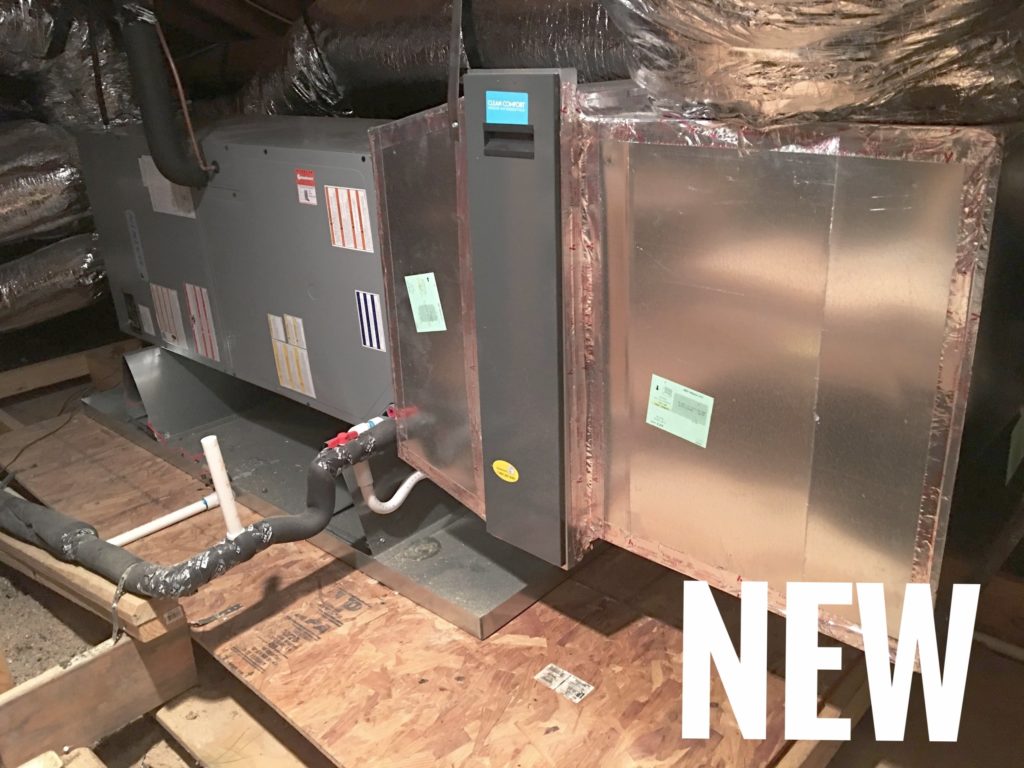 Daikin heat pump 20 SEER
Daikin heat pump 20 SEER 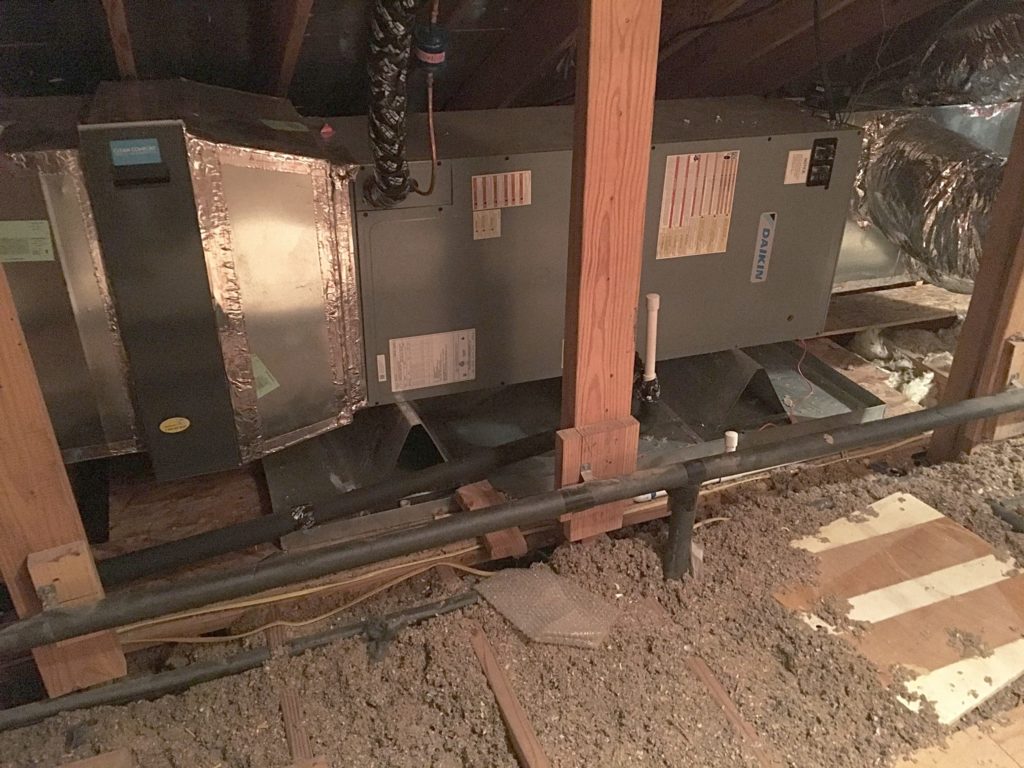 DVPVC Air Handler
DVPVC Air Handler
